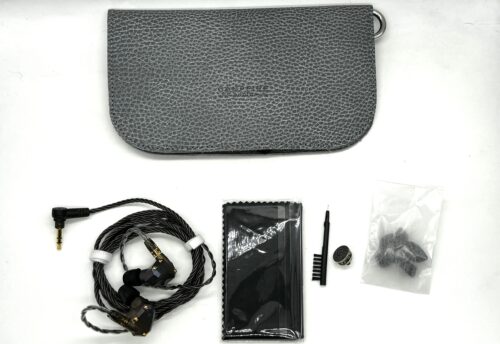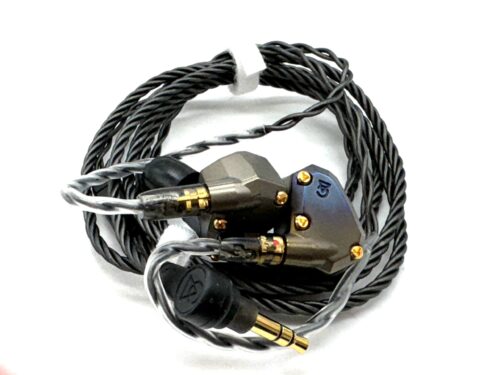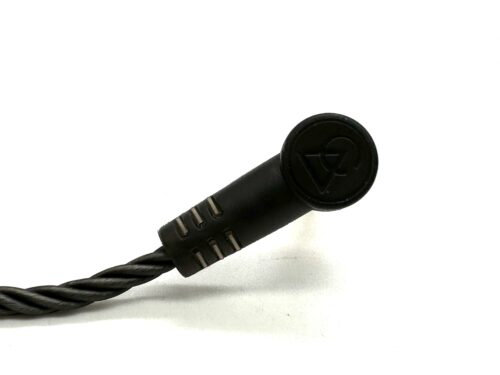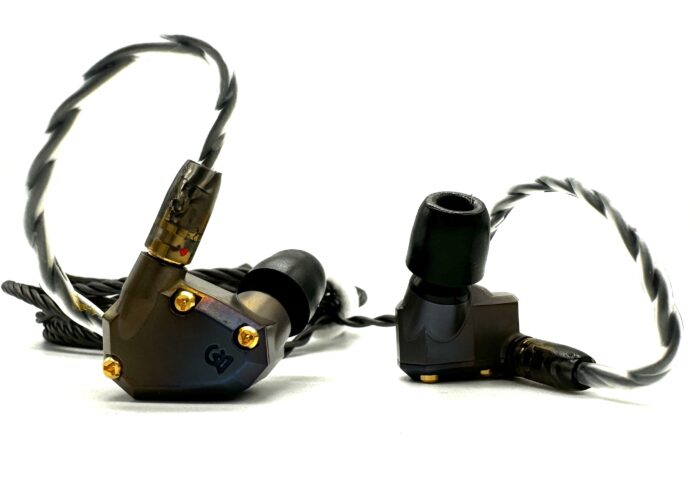Campfire Audio is known for their varieties of tunings and driver configurations. Their Andromeda Emerald Sea is lauded for its warm sound with excellent detail retrieval. Meanwhile an IEM like the Bonneville which is known for its epic bass response. Recently they released the Fathom, which looked to bring a more neutral-warm IEM that could be considered more reference level – they did this with all BA drivers. Now they’re back with a single driver IEM that looks to achieve true neutrality with the limited edition Moon Rover. Will it live up to the Campfire Audio reputation, though? Let’s find out.
What’s in the Box:
- Moon Rover
- Pebble-Gray, leather folding wallet – handmade in Portugal
- Super Smoky Litz 3.5 Cable
- Selection of Eartips – Silicone (S, M, L) & Foam (S, M, L)
- IEM Cleaning Tool
- CA Lapel Pin

Build:
The Moon Rover is built with the same precision and durability that all Campfire Audio products are known for. Let’s start with the look. Each ear piece is “individually flame-treated by hand” which creates almost an iridescent kind of appearance. It’s a cool and unique design and process that sets the IEM apart. That said, your mileage may vary on the actual effect of the flame-treatment, as is the nature of the hand-done process. But while your specific model may not look exactly like the one in the product picture, rest assured that you still have a unique, one of one ear piece.
The IEM is built from aircraft grade titanium. The result is a pretty lightweight build that matches the integrity and design language of earlier Campfire releases. They also sport gold plated screws and a black PVD steel spout. For a small earpiece, Campfire has gone out of their way to make every detail count.
One last note – the Moon Rover is, like all Campfire IEMs, built with MMCX connectors, and the set comes with a Super Smoky Litz cable that terminates in a 3.5mm jack. The cable is classic Campfire with a great build that resists tangling. Not too bulky, not too thin; just right.

Design:
The internals of the Moon Rover are pretty simple. The IEM is built around a single 12mm planar-magnetic driver. Of course, Campfire used a planar configuration previously in their popular Supermoon, but this driver is custom made for the Moon Rover. To briefly summarize the benefits of a planar setup, the Moon Rover is able to get a faster and more detailed response due to the nature of the driver’s unbending and quick movements.
I’ll also add that the Litz cable supplied with the IEM sports a silver-plated copper wire. They use medical grade PVC materials on the outer surface of the cable to ensure flexibility and resistance to oxidation. Finally, the connectors are made from a beryllium-copper mix that is meant to extend the life of the cable. It’s a superb cable for a high end IEM. And through its build and design, the Moon Rover looks to be a potent product from the distinguished hi-fi brand. But how does it sound?
Sound Impressions:
To give a short preface before breaking things down in specific, the Moon Rover goes for a reference tuning. Unlike some of Campfire’s more colorful offerings, this is looking to (pun intended) search for a north star of neutrality. And to my ears, they succeed.
Bass:
In a way, the Moon Rover is chameleon-like in the way that it can provide bass in droves when called for, but stay perfectly linear when not. The bass performance is exactly what you’d expect from a high quality planar driver. It’s fast and punchy with great attack. It’s full of texture on songs that aren’t bass-heavy, letting its presence be known without totally bombarding you with slam. That said, on a song like BadBadNotGood’s “Love Proceeding” where the kick drum hits hard and deep, the Moon Rover delivers with gusto. It’s a quality that allows warm tracks to sound warm and cool tracks to sound cool. For a neutral IEM, the bass is the heart of the sound, dictating how the IEM will approach each song.
Mids:
Unlike the bass, the mid range on the Moon Rover is more set in its ways, which is not a bad thing. It treats vocals and instruments with grace and tact, providing a nice sense of delicate but dynamic detail. There is, however, a cool bent to the midrange that creates an almost nasally effect. I heard this on “Deacon Blues” by Steely Dan, specifically during its saxophone moments. That said, I wasn’t too bothered by it as it ultimately leads to a more detailed and linear performance.
Highs:
The top end of the Moon Rover follows suit with the rest of its frequency response. Even with the linear approach, there’s a smoothness that keeps these from sounding harsh or too analytical. It helps parse out extra detail in guitar tone, for example, like in Cate le Bon’s “Are You With Me Now.” It all culminates in a sweet but natural texture that brings the whole sound together.
Soundstage:
Like other Campfire IEMs, there’s a really nice soundstage present in the Moon Rover. It certainly has a nice and wide linear soundstage. But I was most impressed with two other facets of its presentation: its top to bottom presence and its center imaging. Top to bottom, you get a really nice sense of space. Sounds reverberate as if you were in a room listening to the music rather than having the earpieces in your ears. Likewise, the center image on these IEMs creates a sound that is around you, not in your head. These two aspects together create a holographic sound that is immersive and impressive. The soundstage is one of the highlights of this device.

Final Thoughts:
I thoroughly enjoyed the Moon Rover. Campfire definitely has a hit here with their limited edition run IEMs. So much so that we are going to give it MajorHifi Silver. There are only 888 pairs available for purchase, so you may want to hurry to give these a try when they’re available for purchase.

The Campfire Audio Moon Rover is available for pre-order at Audio46.
MAJORHIFI may receive commissions from retail offers.








